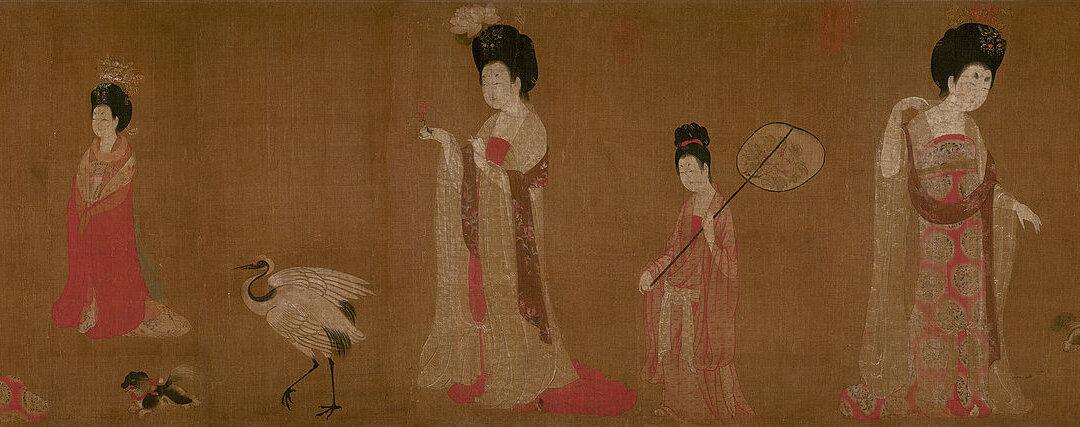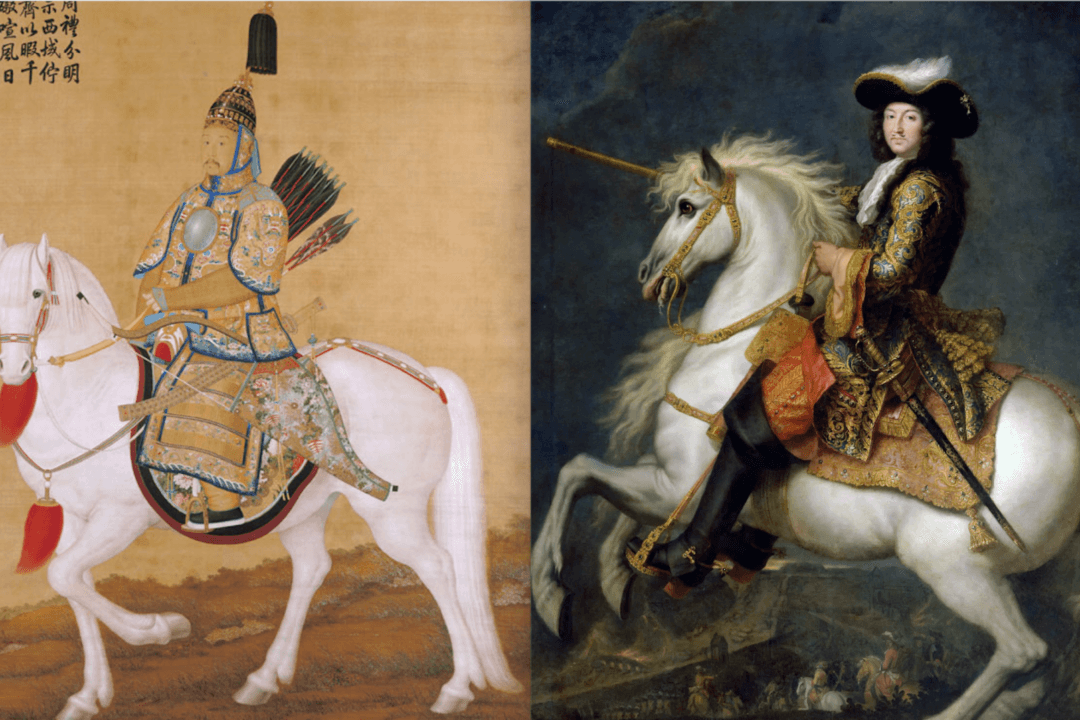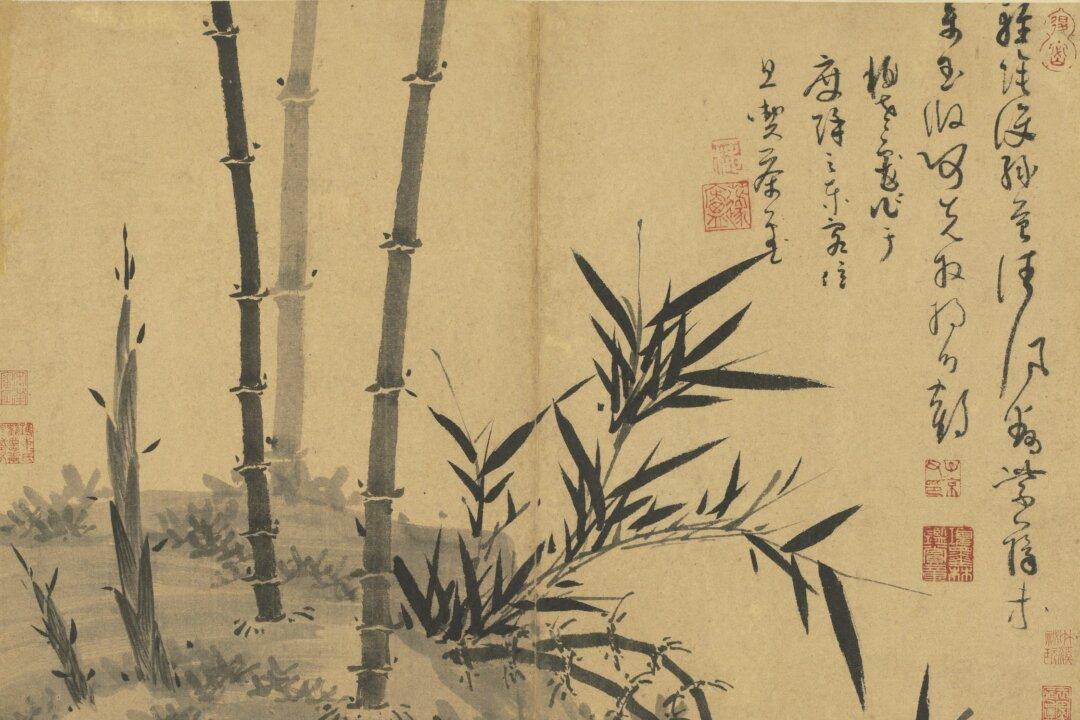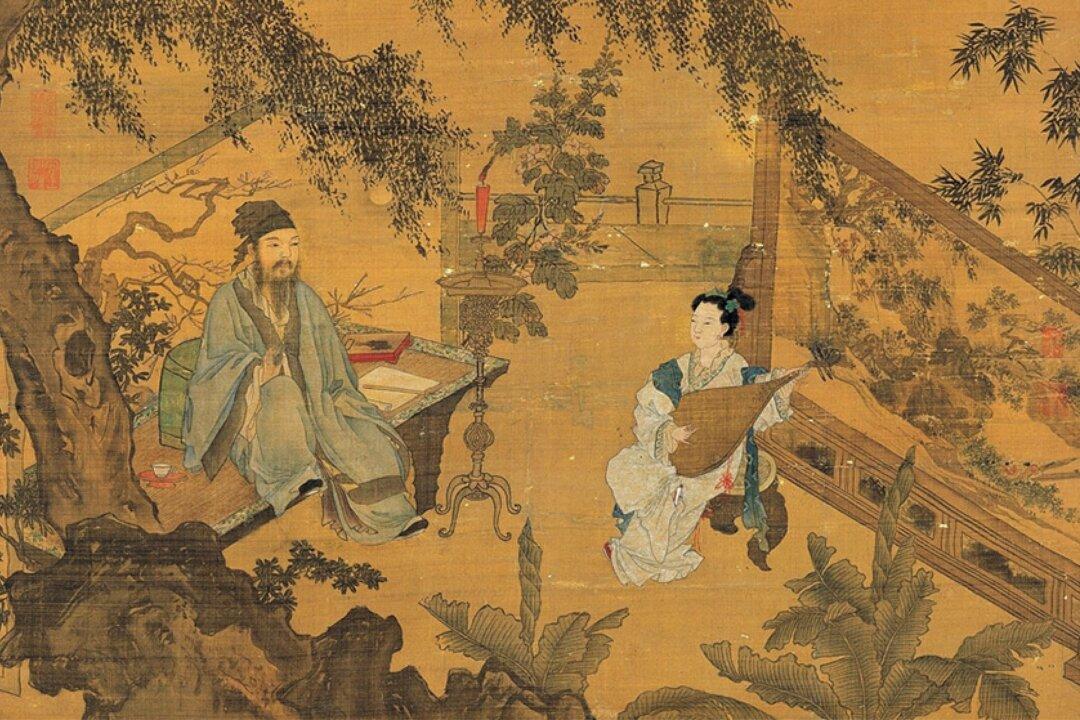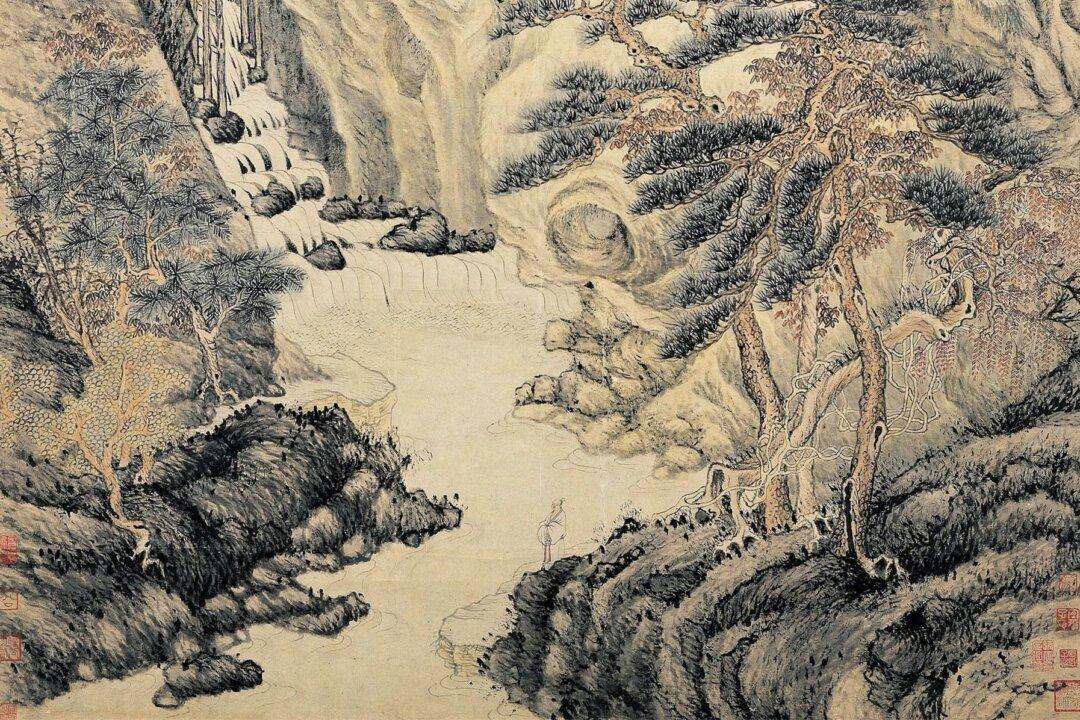During China’s prosperous Tang Dynasty (618–907), a period in which high culture flourished, the genre of painting “beautiful women” reached considerable heights. And ranking above all Tang masters for utmost stylization in portraying the female figure was Zhou Fang (ca. 730–800).
His exquisite silk hand scroll “Court Ladies Wearing Flowered Headdresses” (now held by the Liaoning Provincial Museum in China’s Shenyang province) is a rare jewel that allows us to glimpse the remarkable achievements of not only Tang female portraiture but of fashion at the time.
Feminine beauty and the flower became one, as they both evoked the ephemeral nature of youth.

